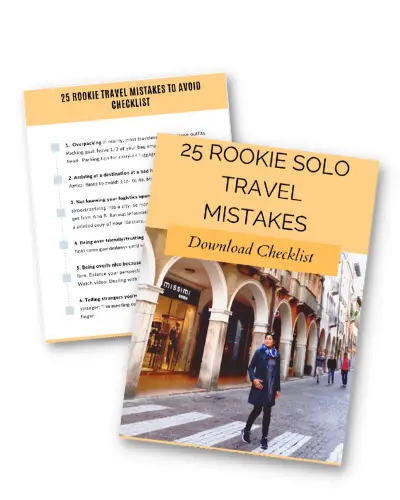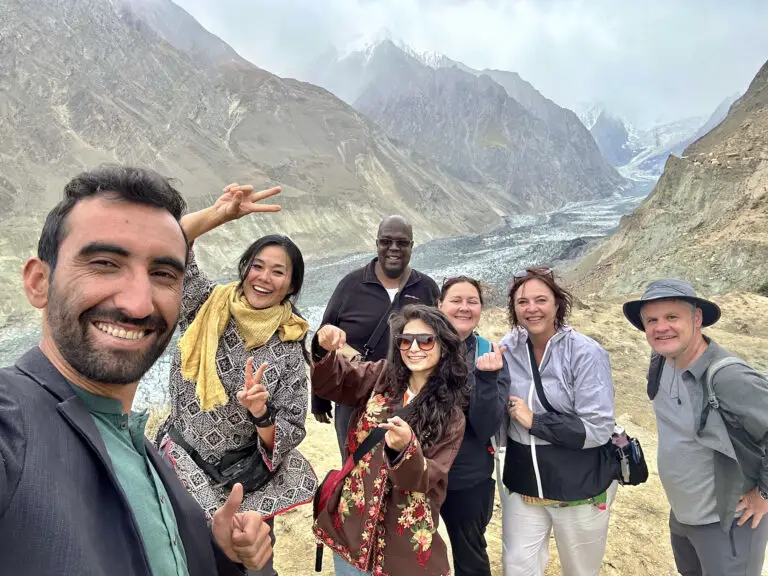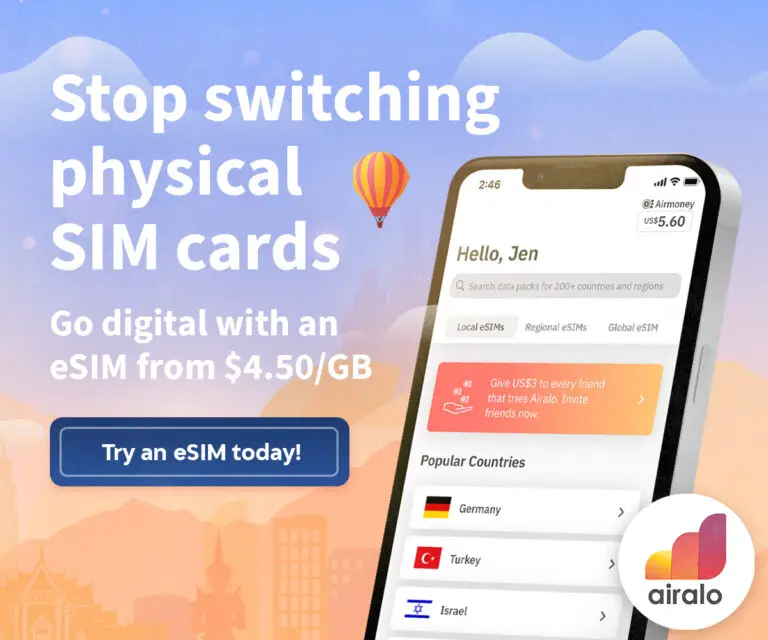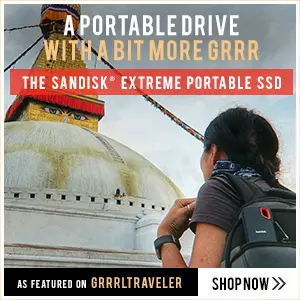Last Updated on March 16, 2024 by Christine Kaaloa

This post contains affiliate links. I have travel insurance on all my trips (get a quote). If you want to find an insurance plan based on your needs & budget, use this trip insurance finder tool . Read my guide on trip insurance options for U.S. Travelers.
.
Travel, with its promise of adventure and the unexpected, can be both exhilarating and unpredictable. But then comes the extra expense of travel insurance to safeguard your trip and offer you peace of mind. Afterall, accidents happen.
You’ve probably asked yoursef- What are affordable travel insurance for U.S. travelers? With this comparison guide, I’ll share the best travel insurance for your solo adventure
I’m sharing a comprehensive guide on travel insurance and comparing four options of travel insurance for American citizens.
Is travel insurance necessary?
Table of Contents: Affordable Travel Insurance for US Travelers ( 6 Unmissable Options! )
- 1 Reasons you think travel insurance is not necessary
- 2 What does basic travel insurance cover?
- 3 Top Six Affordable Travel Insurance for U.S. Travelers
I wasn’t always a believer in travel insurance.
Initially, I was skeptical about the necessity of travel insurance, viewing it as an extra cost. However, my perspective shifted as I encountered unforeseen situations, such as my luggage mysteriously disappears on a connecting flight, leaving me stranded with only the clothes I was wearing. I’ve encountered unexpected illnesses and even car rental scams. I’ve seen fellow travelers encounter theft (some right before my eyes!), bad motorbike spills, cuts that spread into serious infections, the list goes on. In these moments of travel turmoil, having the right travel insurance can be the difference between a frustrating nightmare and a minor inconvenience.
Read my post about solo trip planning
Reasons you think travel insurance is not necessary
You’ll just take yourself to the hospital abroad
Back then, I was in the backpacker state of mind of trying to keep my budget costs low and cockily thought that medical tourism was a good substitute for NO trip insurance. Traveling to Thailand was one of my favorite medical tourism hotspots because medical services are inexpensive and state-of-the-art; I get my dental work done there too.
It wasn’t until I was close to malaria and started witnessing more tourist accidents and crime, that I realized medical tourism covers only part of the expense.

Being an experienced traveler can make us cocky & relaxed
Did you know that the more you travel, you are exposed to more risk? I’ve seen the inside of many hospitals abroad to make me feel- well– cocky at times, like I’ve been-there-done-that and got it covered. But I’ve seen travelers get pulled in from an unsuspected ocean’s undertow and get Medivac’d and that’s no small thing. I’ve seen travelers so bedridden to the point they cannot do anything for themselves. Those are things i”ve thankfully not experienced… yet.
Travelers think that it is inexperienced travelers who get into the most accidents, but that’s not always the case. The more you travel, the more you are exposed to risk, because you gain confidence, a bit more cockiness and you drop your guard.
Travel just makes us more adventurous
We want to try things we don’t get to do these things at home or we cannot afford them. For instance: skiiing, caving, getting scuba diving certified, etc…
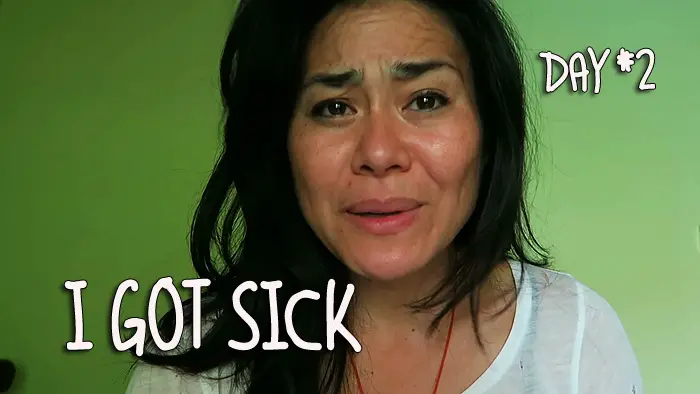
Health & safety standards are different abroad
But we’re not knowledgeable about or familiar with the environment or its hazards. In the U.S., businesses have more standards, regulations, certifications and liability to deal with. The standards of safety are higher. In a developing country, there may not be very strong safety regulations and I’ve certainly experienced excursions that I knew would not pass the safety standard test. Whether it’s failure to provide a helmet to a customer renting a motorbike or entering an unsafe environment like entering dark caves with a flashlight or hiking on a thin muddy ledge with a sharp drop after a rain.
Traveling alone is risky
Traveling solo also opens potential for mishap because you are alone and there is no one to help look out for you.
Here’s more ways you can ruin your trip (that I’ve experienced)!
What does basic travel insurance cover?
Travel insurance isn’t a one-size-fits-all solution. Different policies offer varying levels of protection. When contemplating the need for basic travel insurance, it’s essential to understand what it typically covers.:
-
- Trip cancellation/interruption: reimbursement details.
- Medical emergencies: Coverage for illness, accidents, hospitalization.
- Baggage: Loss, damage, delay coverage.
- Rental car/property damage: Protection against financial liability.
- Emergency Evacuation
- Trip delays: compensation for expenses
- Additional coverages: Evacuation, legal assistance, missed connections etc.
-
Trip cancellation/interruption: This shields you from the financial blow of having to cancel or cut your trip short due to reasons like illness, injury, natural disasters, or political unrest. Imagine the relief of getting reimbursed for non-refundable flights and accommodations if a hurricane forces you to turn back from your island paradise!
-
Medical emergencies: Falling ill or getting injured abroad can be a scary and expensive experience. Travel insurance provides medical coverage for unexpected doctor visits, hospital stays, or even emergency evacuation back home. No more worrying about breaking the bank for treatment in a foreign country!
-
Baggage protection: Travel insurance compensates you for lost, damaged, stolen or delayed baggage, ensuring you have essentials like clothes and toiletries even if your suitcase takes a detour. This happen to me in Morocco and my trip insurance fully reimbursed me for all my expenses. Meanwhile, my girlfriend’s engagement ring was stolen in her suitcase and they only partially reimbursed her. She knew she was lucky they reimbursed her at all.
- Travel Delays: You may receive compensation for expenses related to delayed or canceled flights.
-
Rental car/property damage: Travel insurance can cover your liability for damage to rental vehicles or accommodations, saving you from a hefty financial headache. I didn’t buy the car damage insurance for my Los Angeles Enterprise car rental and when I returned my car, they office claimed that I had damages – small golf-ball sized dings on the top of my roof and the underneath side board. They charged me. It was a common car rental scam. Thankfully, I was insured by my American Express travel insurance. Needless to say, I love American Express and I hate Enterprise.
- Travel Delays: You may receive compensation for expenses related to delayed or canceled flights.
- Emergency Evacuation: In case of a medical emergency, this covers the cost of evacuating you to the nearest medical facility.
How much does travel insurance cost?
Travel insurance for U.S. citizens is not known to be cheap travel insurance. If I were a U.K. or EU citizen, there are insurance plans as low as $25 a month! “Cheap” and “travel insurance” doesn’t always walk hand-in-hand when you’re American.
That said, the cost of trip insurance varies, but is govered by these main factors: trip cost and duration, destination, coverage level, age.
- Trip cost: Insurance can cost around 5-10% of your total trip cost. For example, a $4,000 trip may cost you roughly between $200 and $400.
- Trip duration: Longer trips tend to cost more to insure than shorter ones.
- Destination: High-risk destinations : for instance, those with political instability, low safety standards or frequent natural disasters might have higher premiums.
- Level of coverage: Comprehensive plans with more extensive coverage will naturally cost more than basic cancellation-only plans or the ones your credit card loyalty program might offer for free.
- Age: Younger travelers often pay less than older travelers.
When should I purchase travel insurance?
For most insurance plans, you need to buy your trip insurance before you take your trip so it can cover the entire trip.
However, there are trip insurance providers like SafetyWing that caters to digital nomads who are known to country hop, at a moment’s notice. Digital nomads require a bit more flexibility, so thankfully Safetywing allows them to book coverage at any time, even when they’re traveling the country they’re seeking coverage in.
Top Six Affordable Travel Insurance for U.S. Travelers
Most insurance plans cover a standard: medical and hospitalization, luggage loss, flight delay or cancellation, death, etc… The two things they don’t always cover are theft of belongings such as electronic gear and laptops (i.e. camera vlogging equipment) or adventure activities.
1. World Nomads
World Nomads Travel Insurance is for the adventurous traveler who wants peace of mind to enjoy any activity they stumble across while in another country. The reason I return to them time and again is that World Nomads covers the activities that most trip insurance providers do not cover… adventure (check out what they cover and not). They cover a variety of adventures that I realized I had my excursions fall under, such as scuba diving, caving, driving a motorbike. Hiking is low impact and falls under their basic plan, but trekking falls under their larger plan. They also cover theft and loss of equipment, electronics and personal belongings. As a travel content creator, I need to protect my camera equipment and laptop. What I love about World Nomads Travel Insurance is their insurance prices for U.S. citizens are low in comparison to others and it extends to the age of 67. They usually have two main plans of Basic and Adventurer (for more extreme and at risk activities)
What World Nomads Covers: Adventurous travel
-
- A wide range of adventurous activities, from hiking to scuba diving.
- Valuable equipment like cameras and electronics.
- Flexibility to extend coverage while abroad.
What World Nomads Does Not Covered:
-
-
- Some pre-existing medical conditions may not be covered.
- Exclusions and limitations apply to certain activities.
- Costs may be higher compared to basic insurance.
-
- Necessity and Insider Tip:
- Necessary for adventure enthusiasts and those engaging in high-risk activities.
- Insider Tip: Customize your plan to match your activities and carefully read policy details, including exclusions, to ensure you’re adequately covered.
2. SquareMouth
Squaremouth isn’t a single insurance company. It is a one-stop shop aggregating platform for comparing and purchasing travel insurance tailored to specific needs, from over 40 trusted providers. This includes their own brand, Tin Leg. I’ve used SquareMouth in the past when I needed very specific domestic U.S. coverage. I wanted U.S. travel insurance cheap and I did not want my head spinning, deciphering complex policy wordings. It makes searches super easy and the price add-ons for adventure activities was comparable to WorldNomads. Even less expensive at times.
Their biggest strength lies in simplification, tailoring and transparency. They let you compare coverage options side-by-side, highlighting key differences in price, benefits, and exclusions. But you won’t get every listing under the sun. Trip insurance options for U.S. travelers will be tailored to what you’re looking for. This empowers you to make informed decisions with down-to-earth layman’s language.
What SquareMouth covers:
-
- A spectrum of policies from basic medical coverage for budget travelers to comprehensive plans
- They even cater to seniors with pre-existing medical conditions through specialized policies like Tin Leg.
What SquareMouth does not cover:
-
- Their policies often exclude high-risk activities, pre-existing conditions without disclosure, and pandemics.
- Always read the fine print before purchasing to ensure your chosen plan aligns with your travel itinerary and potential risks.
3. Trip Insurance Master– For Budget Travelers who want options
Trip Insurance Master is a free trip insurance finder tool I like to check from time to time. It is aggregator/search engine that pulls in different trip insurance plans so you can compare plans and find one that matches your needs and budget. The options they offer can feel a little overwhelming at times, but just use the comparison tool to narrow it down. This is for the budget traveler who is seeking flexible, options and specific needs for coverage.
In travel industry, most travel bloggers quote the same trip insurance companies, because they are reputable . Some of us also gravitate to the ones we know meet our specific needs and travel niche. But I’ve found pretty low cost insurance here and one of my group trip guests found a great deal here. He bought an inexpensive insurance plan to cover his age (as an American senior citizen) and our trip to Pakistan! His insurance price quote was even less than mine at World Nomads (although my travels were longer and I needed to insure my camera equipment). It’s definitely worthwhile to check out.
Tip: Compare the different plans offered by Trip Insurance Master to find the one that best matches your travel needs. Consider add-ons for specific coverage.
What Trip Insurance Master covers:
-
- Easy to read and compare insurance plans.
- Various insurance plans catering to different travel needs.
- Assistance with travel-related emergencies and claims processing.
- -on options for additional coverage is easy.
What Trip Insurance Master Does Not Cover:
-
-
- Coverage terms and benefits vary by plan, so careful consideration is needed.
- Pre-existing medical conditions may require additional documentation.
- Limited coverage for extreme sports and adventure activities.
-
4. Safetywing for Digital Nomads
Safetywing Nomad Insurance is great for digital nomads and long-term travelers, as the insurance plans are inexpensive and ideal for covering a long duration… They have two plans: a basic trip insurance and a remote health insurance. This means they cover travelers who are continually on the move and living abroad for an extended time. The only drawback is that their plan is not comprehensive and does not include adventure activities or stolen belongings. (Read more )
Tip: Understand the coverage for high-risk activities and consider purchasing additional coverage for specific sports or activities if needed.
What SafetyWing Covers: Basic and long duration international travel
-
- Medical expenses, including coverage for COVID-19-related illness.
- Emergency medical evacuation.
- Limited coverage for adventure sports and activities
What Safetywing Does Not Covered: Not comprehensive
-
- Pre-existing medical conditions
- High-risk activities
- U.S. to U.S. or domestic travel. It only applies to international trips.
- Travel theft of personal belongings, electronics, gear
Get a quote from SafetyWing Nomad Insurance
5. Tin Leg Travel Insurance: For Seniors with Pre-existing Conditions
As I get older, I cannot help but being concerned that senior trip coverage might come at a premium. Tin Leg Travel Insurance nips that myth. It caters to adventurous seniors and U.S. travelers over 50 with pre-existing medical conditions. There is an Adventure plan. Tin Leg is helpful in offering comprehensive medical coverage without the nose-bleed premiums of standard plans. Another trip insurance with senior and preexisting medical conditions coverage is Berkshire Hathaway.
What is Covered: Seniors with pre-existing medical conditions
-
- Pre-existing conditions. Tin Leg offers coverage with affordability and the understanding of common senior ailments like diabetes, hypertension, and arthritis.
- Robust medical emergency coverage for unexpected illnesses or injuries abroad, including hospitalization and evacuation.
- Trip cancellation and interruption and baggage delay/ loss.
- 24/7 assistance for travel guidance, medical assistance, or emergency translation services.
Here’s what Tin Leg doesn’t cover:
-
-
- Routine checkups or pre-existing conditions that require ongoing treatment.
- Elective medical procedures or cosmetic surgery.
- While it covers some adventures, it does not cover high-risk activities like extreme sports or competitive racing.
-
6. Travel Rewards Credit Cards
Consider the benefits provided by travel rewards credit cards. Some credit cards make it easier for you to access basic trip insurance while enjoying the perks of travel rewards, which can buy you flight tickets, hotel stays and airport lounges access. This option is ideal for budget-conscious travelers on short, U.S. to U.S. domestic trips with minimal risk. Living in California and flying to Ohio? Use your credit card trip insurance to cover your trip!
Tip: Review your credit card’s coverage details carefully to understand its limitations and eligibility criteria. Consider supplementing with additional insurance coverage if you are planning an international trip where more unexpected situations may arise and the stress is higher.
What’s Covered: Basic trip insurance
-
- Trip cancellation or interruption due to unforeseen circumstances like illness or emergencies.
- Lost, stolen, or damaged baggage and personal belongings.
- Some medical expenses during travel, but usually with limitations.
What’s Not Covered: Anything that is more comprehensive
-
-
- Pre-existing medical conditions.
- Adventure sports and activities may not be covered.
- Limited coverage for trip delays or interruptions that aren’t considered “covered reasons.”
-
Best Travel Insurance Credit Cards with Points
For American travelers, some travel rewards credit cards offer a convenient starting point. These cards often provide basic trip insurance when you use them to purchase your trip. Here are a few noteworthy options (please double-check these features before signing up as this is my personal blog and credit card policies can change with time):
- Chase Sapphire Preferred® offers trip cancellation and interruption insurance, making it a solid choice for those new to travel insurance.
- Capital One Venture Rewards includes travel accident insurance, offering protection against accidental injury or dismemberment during travel, lost baggage, trip delays and rental cars. Additionally it offers $100 credit if you buy a Global Entry Pass; essentially, I got my Global Entry Pass for free. Read about Global Entry Pass vs TSA Precheck
- Citi Premier® offers trip cancellation and interruption protection, as well as coverage for baggage delays and lost luggage.
- American Express is one of my favorite cards. The Platinum provides comprehensive travel insurance, including trip cancellation, trip delay, baggage loss, and car rental insurance. But even the lesser American Express cards, have a basic trip insurance policy. My girlfriend used her American Express card to cover her Moroccan trip and it paid her back when she filed for her lost luggage and the stolen engagement ring she left in her luggage! International vendors hate this card as it has a high service fee, so I don’t always use it for shopping or small vendor bookings.
- Bank of America® Travel Rewards offers trip interruption and cancellation coverage, making it accessible for budget-conscious travelers.
How to submit travel insurance claim?
I won’t sugarcoat it, it’s not fun to submit travel insurance claims with an insurance company . The paperwork and wait can drag out for months. After experiencing delayed luggage during my time in Morocco, I got home and downloaded the claim forms from the insurance company website. . I filled out forms, faxed everything, along with necessary proof. In the end, both my girlfriend and I got small compensation from our insurance agencies so that it wasn’t a completely loss. But it took over six months to get.
If you buy travel insurance and actually get into a situation where you’ll be using it, remember these essentials you need to acquire to submit travel insurance claims :
• Call the toll-free number of your Travel Insurance company with your policy number ASAP and notify them of your situation. Ask them what documents are required to submit a travel insurance claim, so moving forward on your trip, you know what to get. .You don’t want to leave the country only to find out later you needed to get a signed baggage loss complaint form from the airlines.
- Get signed authorized complaint forms from the corresponding official. Common examples are:
- Baggage loss complaint form at the airlines
- Police report for theft
- Doctor’s report for medical services if you have to cancel a flight
• Keep your flight tickets and itinerary
• Always hold onto your baggage tags for lost luggage
• Collect any store or purchase receipts. Keep records of your expenses (some countries are cash-based and may not offer receipts. Keep a hand-written list of purchased items.)
- Take photos of your valuables or contents of your luggage before you travel
- Keep a carnet if you travel with expensive camera gear or equipment. I like to document all my travel gear along with serial numbers, model and name, along with general retail price. I always keep it in my Google Drive so if I am ever questioned about my equipment I have documented proof of possession.
• Basically, collect everything and anything you can think of that can be used as proof
Is travel insurance worth its claim? In many cases, having gotten back something feels better than just experiencing a trip’s loss.
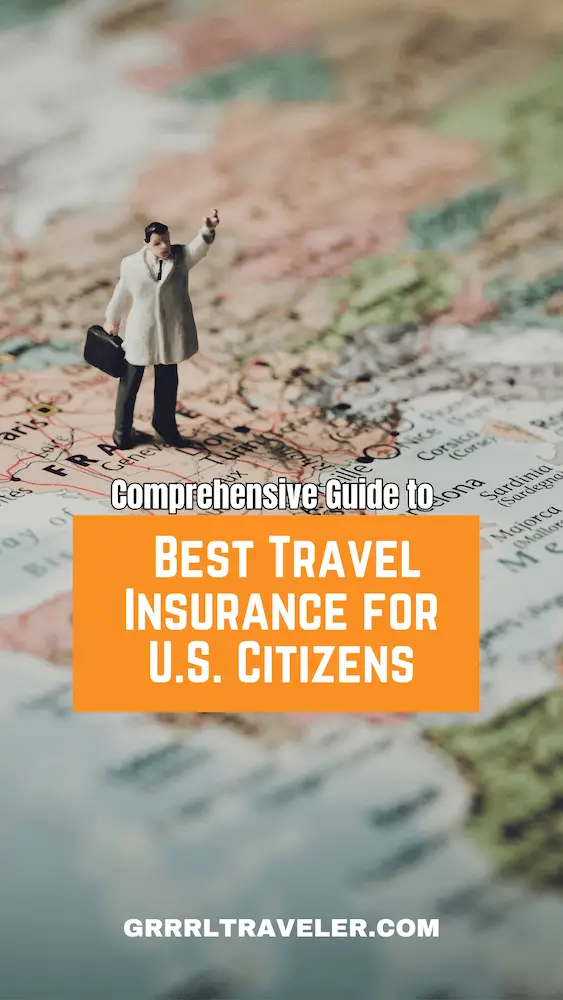
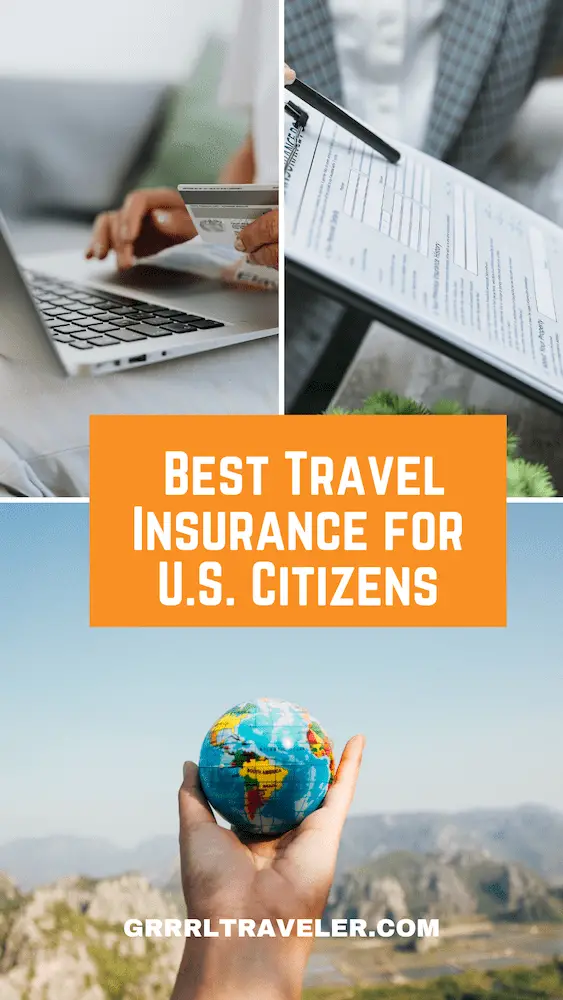

Any tips or recommendations for best travel insurance for U.S. Citizens? Would you agree these are the affordable travel insurance for U.S. citizens?


